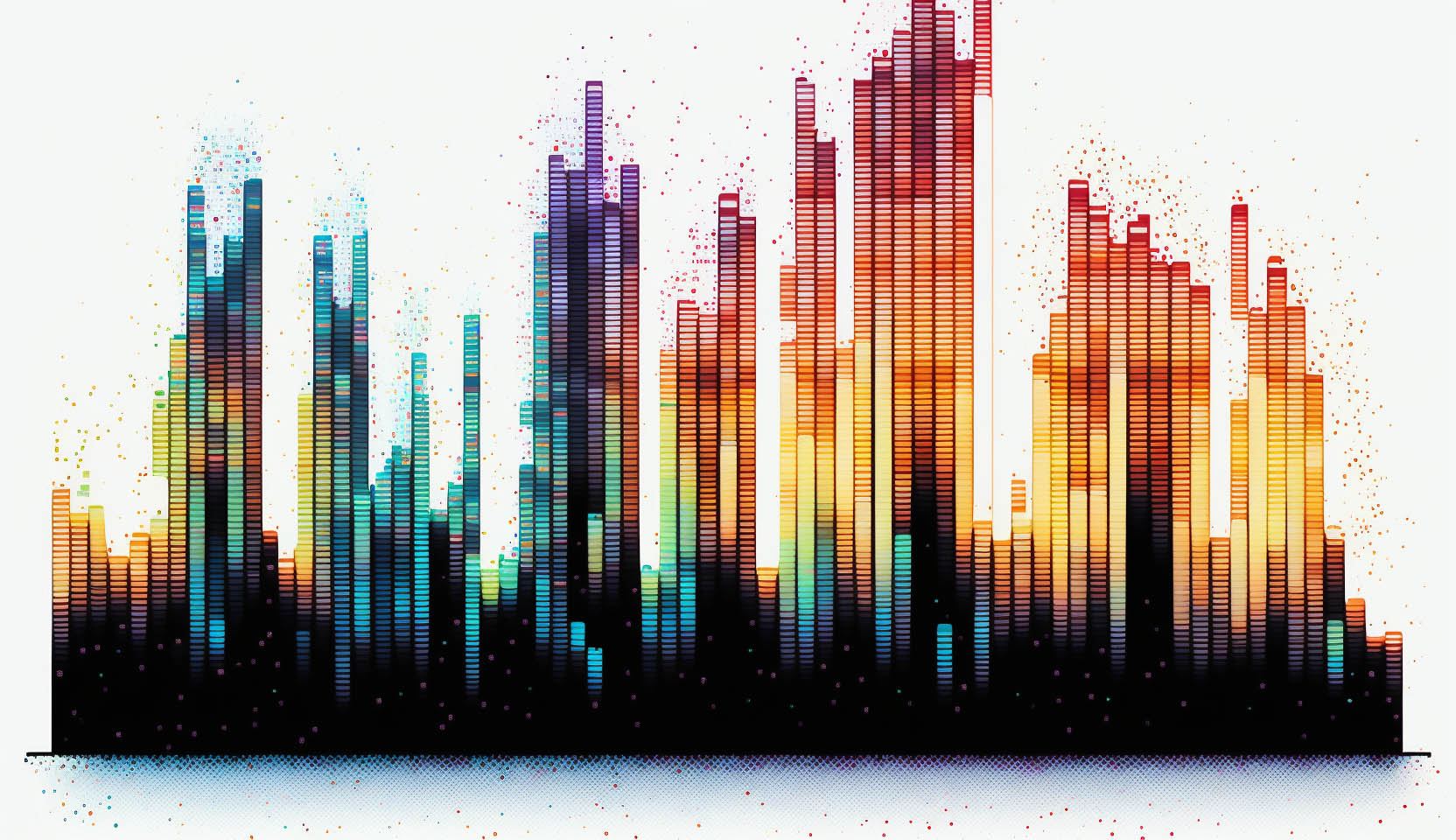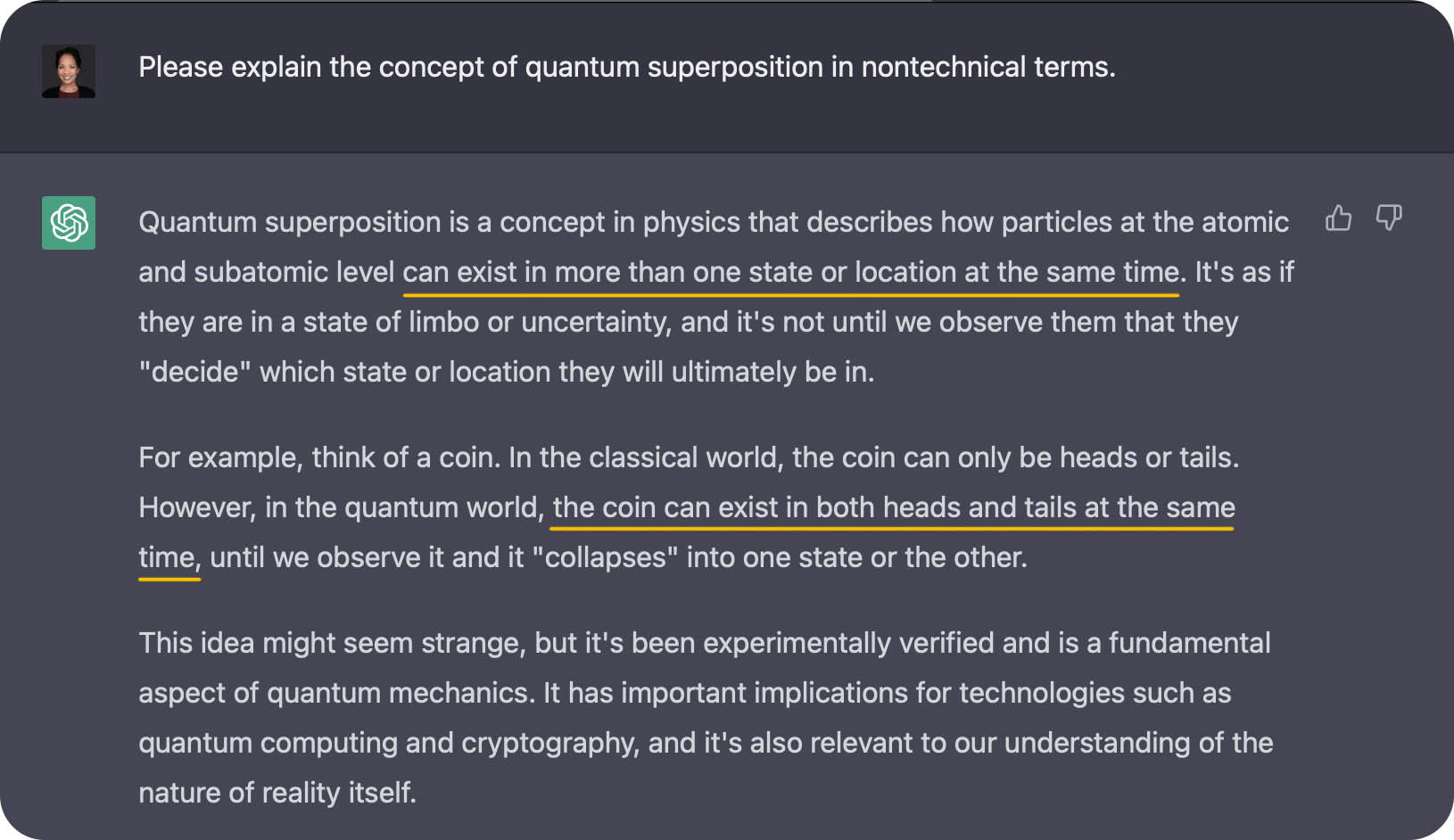What is Superposition, Really?
The next episode in the fAQ video podcast is now up! As mentioned last time, this is a new project I've embarked on with Adam Green where we chat about different ideas in quantum physics and (at some point) AI. Our primary goal is simply to help make these ideas more accessible to wide audiences — especially to folks who may've heard about certain words in, say, the popular media, but who may not have a technical background and who aren't really sure what those words mean.
We thought it'd be good to launch the podcast with some basic, fundamental ideas that can be used as a foundation for discussing real-world application in future episodes. Last time we introduced the topic of qubits, and today we're focusing on another basic topic, namely superposition.
So, what is superposition? We spend nearly an hour on this question, so I won't spoil it all for you! But there are a few remarks I can't resist sharing here.
To start, the concept of superposition is very simple from a math perspective. It's just the notion of a linear combination in linear algebra. But this isn't very helpful if you haven't taken a course in linear algebra. So Adam and I spend the first 15 or so minutes trying to explain superposition without using linear algebra or math more generally.
I especially like Adam's example at the beginning. Around four minutes in, he notes that the idea of superposition is a lot like the idea of a histogram. Imagine you have some things that you're interested in — layers of the earth's crust, for instance — and you sort of juxtapose them together (or perhaps you find they're naturally juxtaposed together, as in geology). Then you might say those things are superimposed on one another.
Now, taking this a step further, imagine you've assigned some values to each thing — say, the ages of each strata of rock, or the distance that each layer is from the earth's core. Then you can list out those values in histogram, where each bar represents a different layer of earth, or whatever you're interested in. In the context of quantum physics, each bar of the histogram might represent a different thing you could observe a quantum particle doing or a different aspect of it. These "aspects" have names like spin, polarization, energy, and so on. Then the height of each bar would represent (something like) the probability* that you'll find the particle doing that thing. Of course, it gets a little deeper than that — that is, there's a reason physicists work with probabilities instead of something else — but that's the essence!
By the way, this histogram analogy is the reason for the thumbnail for today's episode. It's a funky histogram that Adam made using Midjourney. I think it's pretty cool. But I digress!

Admittedly, explaining superposition without the language of linear algebra can be a bit challenging. I think this is why a lot of online articles and YouTube videos end up saying things like, "Superposition is when a quantum particle is in multiple states at the same time," or something along those lines. Personally, I think that sounds confusing (what does it mean to be in multiple states at the same time?) and makes the concept seem a lot more esoteric and out-of-reach than it really is.
This then prompted me to wonder how ChatGPT would describe superposition. Not surprisingly (it's trained on the internet, after all) it uses this same not-so-great language found in popular media articles. On the plus side, though, it did try to help make superposition sound less "strange" by noting that it's been experimentally verified and has real-world applications. That's a nice plug for a future fAQ episode, where we'll talk about some of those applications!

Anyways, I hope one takeaway listeners may get from this episode is that the "both at the same time" language you often see on the internet is just shorthand for this simple histogram idea, which itself is an analogy for a slightly more (but not too much more) subtle idea, which we discuss in the video.
In this episode, we also had fun inviting Stefan Leichenauer to join the discussion with us. Stefan is a physicist with a background in string theory and quantum gravity in the lab. He's also great at explaining things. I hope you'll listen in.
New episodes are expected to drop every other Tuesday.
Until next time!

*Technically, in this analogy, the heights of the bars would be what are known as probability amplitudes, which physicists prefer to work with, rather than working directly with probabilities. I glossed over this in the video since it's a technical point. But I should probably say it here: a probability amplitude is a (complex) number whose (modulus) square(d) is a probability. But what does that mean? It could be fun to chat about this later on the podcast.
